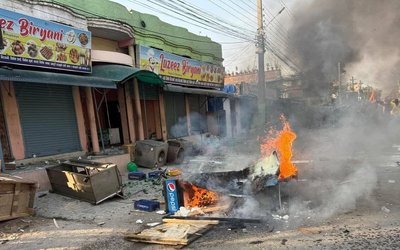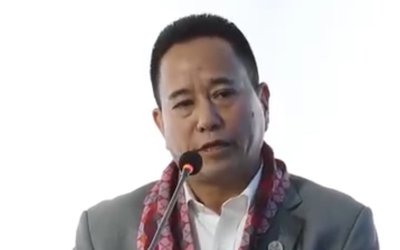More on News





The World Development Report 2011 has revealed a pathetic scenario for conflict affected countries of the world. According to the report, some 1.5 billion people live in countries affected by repeated cycles of political and criminal violence, causing human misery and disrupting development.
“To break these cycles, it is crucial to strengthen legitimate national institutions and governance in order to provide citizens security, justice and jobs, as well as alleviating the international stresses that increase the risks of violent conflict,” said the report.
Despite a decade long history of conflict, Nepal has made unbelievable achievements in the Millennium Development Goals (MDGs). However, the World Bank’s World Development Report revealed that no low-income fragile or conflict-affected country has yet achieved a single MDG.
Nepal went though an intense conflict with the loss of more than 15,000 people and infrastructure worth of millions of rupees but it was able to achieve MDGs in three critical areas, including infant mortality, maternal mortality and girl education.
As conflict and criminalization are global phenomena, the World Bank chose the topics, conflict, security and development, as a theme for the World Development Report 2011,” said Nigel Roberts, special representative/director of the Report. “Political violence is growing in the countries around the world slowing down economic development work. As political stability and peace are a prerequisite for high economic growth, the challenges are there for the country like Nepal to restore them.”
According to the study, violence is spurred by both local and international stresses: youth unemployment, inequality between social, ethnic, regional, or religious groups, economic shocks, infiltration of trafficking networks and foreign security interference. In survey areas affected by violence, citizens cited unemployment as the main motivation for recruitment into both gangs and rebel movements – with corruption, injustice and exclusion, the main drivers of violence.
“The report reveals that violence happens where states and sub-national governments do not provide security and access to justice, markets do not provide employment opportunities and communities have lost the social cohesion that contains conflict. No country can afford to ignore areas where violence flourishes and citizens are excluded from social justice and economic progress.”
The report finds out those countries where government effectiveness, rule of law, and control of corruption are weak have a 30 to 45 percent higher risk of civil war and significantly higher risk of extreme criminal violence.
The report showed that violence cannot be confined to certain areas. “The effect of violence in one part of the world spreads to other more stable areas though refugee flows, criminal networks, drug trafficking, epidemic diseases and shocks to the prices of commodities such as oil.”
Countries with recent human rights abuses are far more likely to experience conflict than countries with a strong history of respect for human rights. Each one-step deterioration on the five point political terror scale- which measures arbitrary detention for non-violent political activity, torture, disappearances, and extrajudicial killings- resulted in a more than 43 percent increase in the risk of civil war in the following five years.
The report also found that countries with weak government effectiveness, rule of law, and control of corruption have a 30-45 percent higher risk of civil war, and significantly higher risk of extreme criminal violence than other developing countries.
“Following the end of the cold war, the number of conflict supported by state actors decline but the loss of human life in other kinds of conflict grows. Forty-two million people are displaced today as a result of conflict, violence or human rights abuse. Of these, 15 million area refugees outside their own country and 27 million are displaced internally within their own country.
As a country like Nepal will have to pass though a long cycle of violence and conflict, the trauma of violence will continue to haunt Nepalese society where legal impunity is encouraging various criminal elements to commit more crimes, it said.





